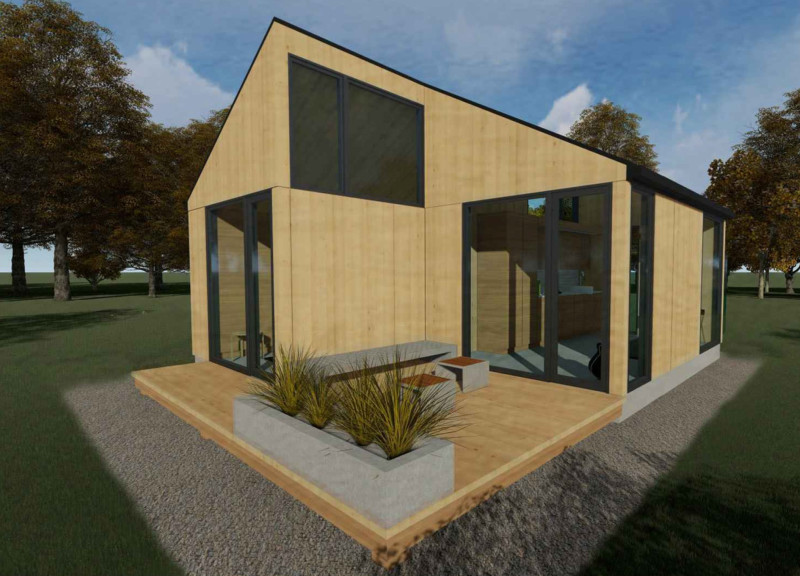5 key facts about this project
The design is located in a compact urban area, focusing on flexible living spaces through a modular approach. The base module covers 12.5 square meters, allowing for customization based on various user needs and site conditions. The overarching concept emphasizes adaptability, resilience, and sustainability, merging practical design with everyday functionality.
Plan Variants
Five plan variants are incorporated into the design to maximize space while addressing different needs. The Compact variant includes systems for solar and rainwater collection, highlighting an emphasis on sustainability. The L-Shaped variant is designed to take advantage of solar exposure and offers varied views, effectively creating usable outdoor areas. The Linear layout optimizes solar orientation and encourages natural airflow within the living space. Meanwhile, the Offset variant establishes outdoor zones while enabling natural lighting and efficient water management. Finally, the Stacked variant organizes the interior to separate public and private areas while minimizing the overall footprint.
Site Conditions
The design takes into account various site conditions, utilizing construction methods such as post and beam systems, crawl spaces, and slab-on-grade foundations. This approach ensures that the modules can fit both traditional and contemporary settings, giving them a broad range of applicability in different locations.
Interior Modules
Inside, the layout is carefully divided into functional modules tailored for specific purposes. The kitchen and storage area features essential cabinets and a top ledge for lighting and additional storage. The bedroom, which also serves as an office and storage area, combines a foldable couch with desk space, catering to living, working, and sleeping needs. The bathroom integrates a prefabricated unit linked to rainwater systems, reinforcing the commitment to sustainability and efficiency.
Design Details
A variety of modular components, including wall panels, clerestory panels, and sloped roof panels, contribute to optimized solar exposure and effective daylighting. Clerestory windows enhance light flow, while sloped roofs collect rainwater, supporting environmental control strategies. The materials used for cladding include shingles, weathering steel, metal panels, fiber cement, and vertical siding, providing both durability and aesthetic versatility in line with the design.
The overall arrangement of these architectural elements results in a detailed design that reflects modern living. It balances practicality with a focus on natural systems, ensuring that each module serves its purpose effectively. The thoughtful organization of spaces fosters a comfortable flow, reinforcing the connection between indoor life and the environment outside.






















































